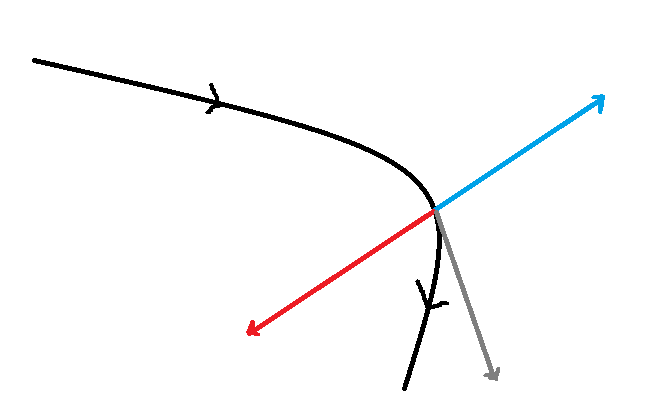
If A represents electric field, then the line integral represents the work done. Found inside – 6.15 INTEGRATION OF VECTORS The integration of vector field functions may be carried out in one dimension, in two dimensions or in three dimensions. Similar to integrals we've seen before, the work integral will be constructed by dividing the path into little pieces. This same kind of geometric argument can be extended to show that the line integral of a three-variable function over a curve in space does not depend on the parameterization of the curve. Does 10BASE-T need more sophisticated electronics than 10BASE5/10BASE2? Find the work done by the force field $F(x,y) = -xi + 6yj$ along the path $C:y = x^3$ from $(0,0)$ to $(6,216)$.

They can be used to calculate the work done on a particle as it moves through a force field, or the flow rate of a fluid across a curve. Calculate the flux of across a unit circle oriented counterclockwise ((Figure)). Now we drop a âsheetâ from down to the xy-plane. Homework Statement A curve is formed by the intersection of y^2/9 + z^2/4 = 1 and the plane x-2y-3z = 0. Then, and Therefore, the circulation of F along C is. Calculate the work done on a particle that traverses circle C of radius 2 centered at the origin, oriented counterclockwise, by field Assume the particle starts its movement at, The work done by F on the particle is the circulation of F along C: We use the parameterization for C. The prime example of a line integral is the work done by a force.

Last chapter introduced the concept of flux and the surface integral associated with it. However, there is no reason to restrict ourselves like that. Let C be an oriented curve and let â∬ denote the same curve but with the orientation reversed. Letâs first see what happens to the line integral if we change the path between these two points. To be precise, curve C is piecewise smooth if C can be written as a union of n smooth curves such that the endpoint of is the starting point of ((Figure)).įinally we will give Green's theorem in flux form. More formally, let C be a plane curve parameterized by Let be the vector that is normal to C at the endpoint of and points to the right as we traverse C in the positive direction ((Figure)). Using line integrals to find the work done on a particle moving through a vector field If you're seeing this message, it means we're having trouble loading external resources on our website. Imagine moving along the path and computing the dot product as you go.
#Line integral workdone how to
We have learned how to integrate smooth oriented curves. To compute the flux, we first need a parameterization of the unit circle. 5.1 Equation (5.1) states that the work done by a force on a particle as it is displaced from one point to another depends on the path between the two points. It is also common to use vector fields to represent velocities. The second type of line integrals are vector line integrals, in which we integrate along a curve through a vector field.

Work in a rotation field: Consider the rotation field F = and the three paths shown in the figure. You should have seen some of this in your Calculus II course. To see where the term circulation comes from and what it measures, let v represent the velocity field of a fluid and let C be an oriented closed curve. Greens theorem can also be extended to line.Greens theorem establishes a connection between a double integral and line integral & Greens theorem in a plane applies to simply connected region bounded by closed curve.Line integral of a vector function are helpful in determining total work done by a force F & find the circulation of F.The idea of flux is especially important for Greenâs theorem, and in higher dimensions for Stokesâ theorem and the divergence theorem. For example, Figure 15.12 shows an inverse square force field similar to the gravitational field of . Is this multi-company employment relationship a usual practice? ), $W=\displaystyle\int_0^6\cdot\,\mathrm dt$ Found inside – 0One of the most important physical applications of line integrals is that of finding the work done on an object moving in a force field.


 0 kommentar(er)
0 kommentar(er)
